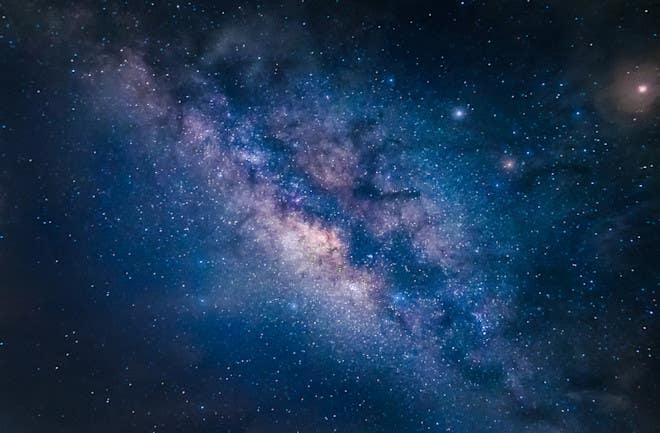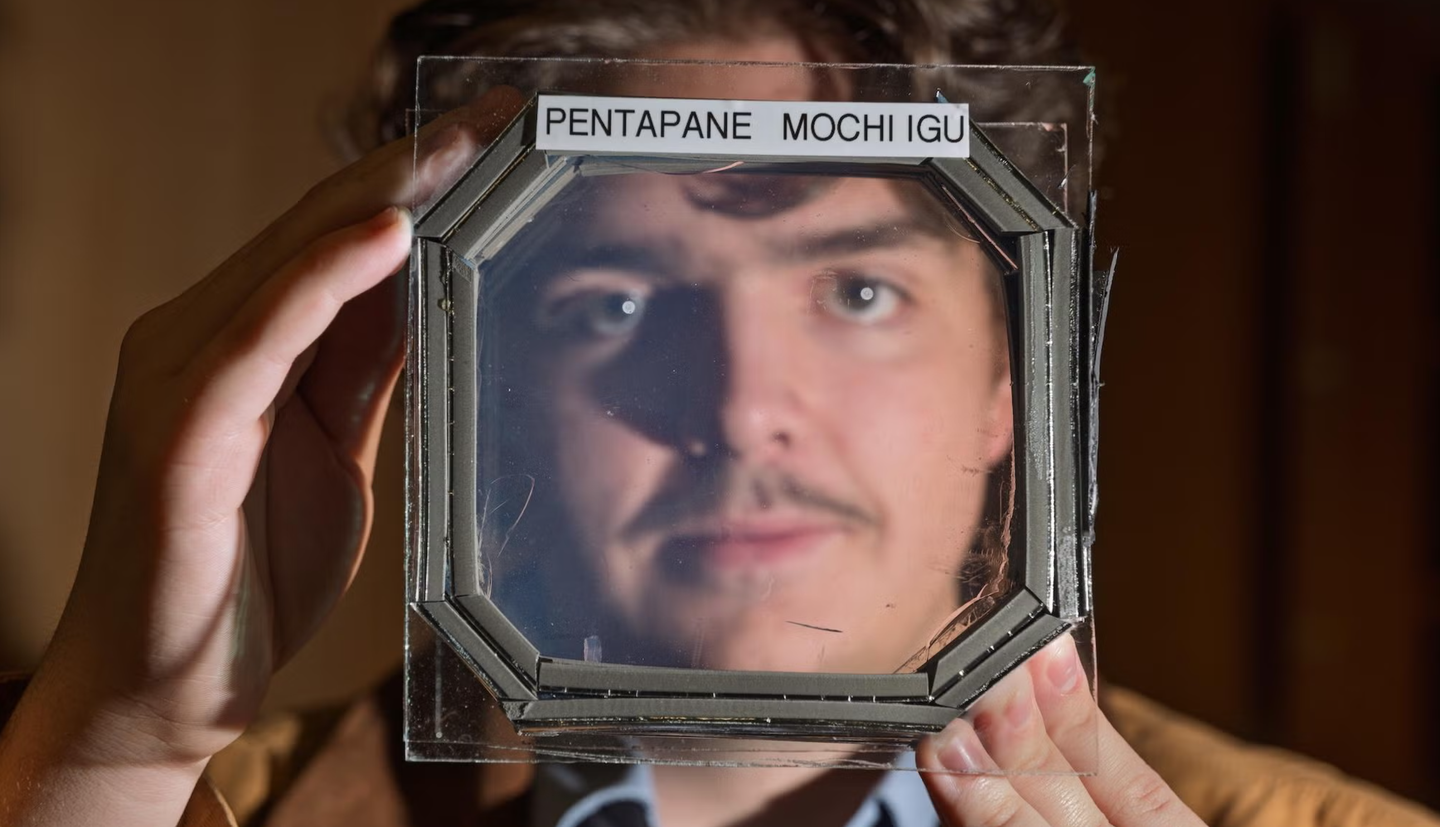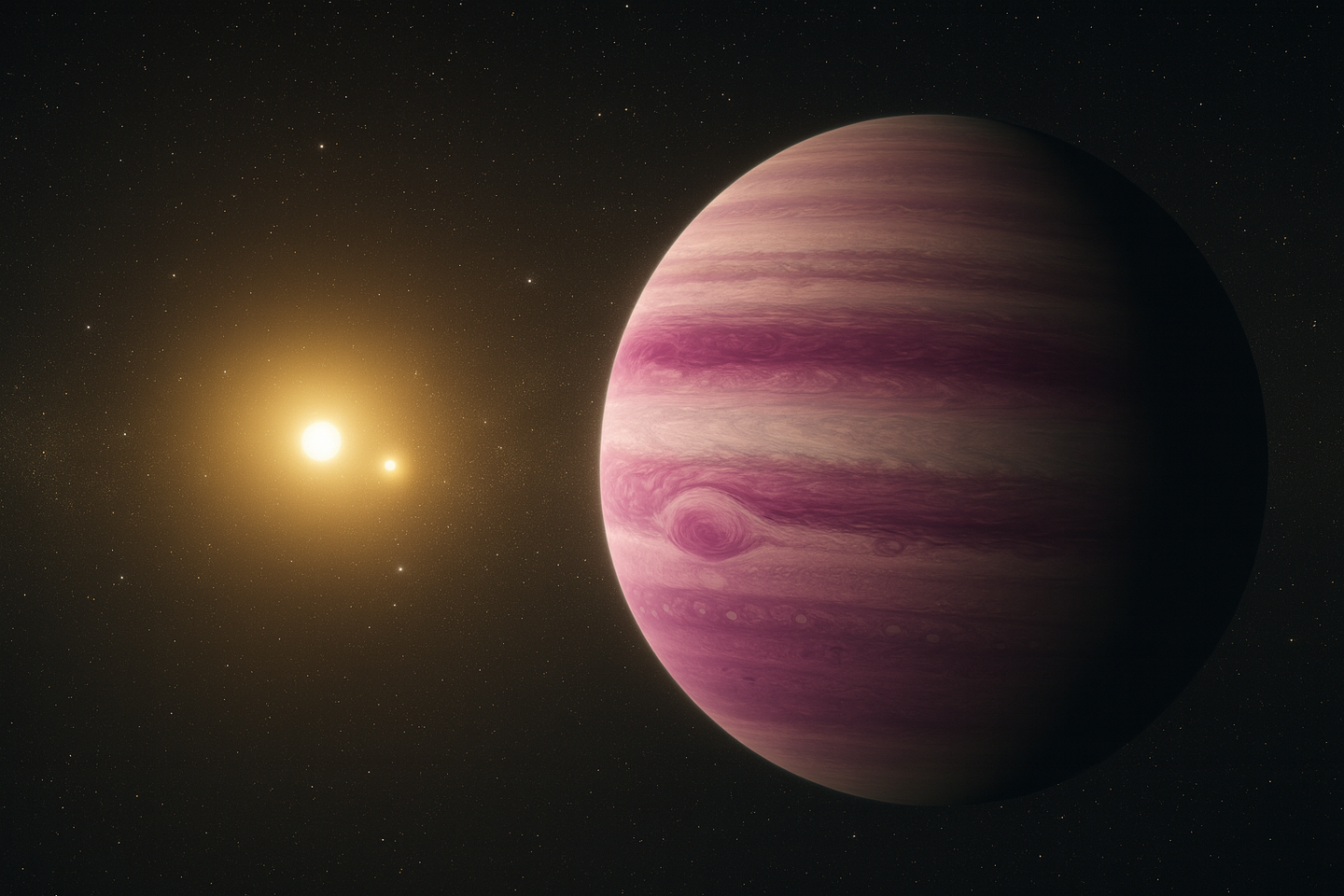Astronomers discover the universe’s missing cosmic matter
Astronomers found vast clouds of missing cosmic matter surrounding galaxies, revealing new insights into galaxy evolution and cosmology.

Astronomers uncovered the universe’s missing matter as enormous halos of ionized gas around galaxies. (CREDIT: Apisit Kontong / Shutterstock)
Astronomers have long struggled with a troubling puzzle: a significant portion of normal matter in the universe appeared to be missing. Scientists knew this matter had to exist based on predictions from the Big Bang, but it remained hidden. Recent discoveries now reveal this elusive material as diffuse clouds of ionized hydrogen gas surrounding galaxies, extending far beyond what earlier observations suggested.
These findings not only explain the mystery of missing cosmic matter but also provide fresh insights into galaxy evolution, black hole activity, and the distribution of gas relative to dark matter. This breakthrough could resolve longstanding conflicts in cosmology and open new avenues for understanding the universe’s large-scale structure.
Hidden Matter and Galactic Halos
For decades, astronomers accounted for normal matter—also known as baryonic matter—as everything visible, like stars, planets, and glowing gas clouds. Yet, counting all these objects together, they fell short by more than half. This discrepancy has baffled researchers because about 15% of all matter is baryonic, with the rest being dark matter. But only a fraction of baryonic matter was ever found in visible form.
Recently, astronomers made significant progress toward resolving this mystery. Researchers from the University of California, Berkeley, and Lawrence Berkeley National Laboratory detected previously invisible baryonic matter surrounding galaxies in massive halos.
Using data from millions of galaxies observed by the Dark Energy Spectroscopic Instrument (DESI) imaging survey and precise measurements from the Atacama Cosmology Telescope (ACT), they identified enormous clouds of ionized hydrogen gas extending much farther from galaxy cores than anyone suspected.
This invisible gas, too thin and cool to detect by traditional methods, exists primarily as a warm-hot intergalactic medium (WHIM). While WHIM is diffuse and invisible to regular telescopes, scientists found a clever way to trace it using subtle effects on the cosmic microwave background (CMB)—the oldest light in the universe, created shortly after the Big Bang.
Related Stories
Seeing Gas Through Cosmic Backlighting
The team led by Boryana Hadzhiyska, a Miller postdoctoral fellow at UC Berkeley, measured the kinematic Sunyaev-Zel’dovich (kSZ) effect. This technique identifies how electrons in moving gas clouds alter the CMB. When electrons in these clouds scatter CMB photons, they slightly change its brightness. This subtle shift lets astronomers measure gas distribution around galaxies without needing to see it directly.
"The cosmic microwave background is behind everything in the universe," said Simone Ferraro, a senior scientist at Berkeley Lab and UC Berkeley. "You can use it as a backlight to see where the gas is."
By stacking images of nearly seven million luminous red galaxies—located up to eight billion light-years from Earth—scientists achieved unprecedented sensitivity. This allowed them to detect the kSZ effect clearly, at a confidence level unmatched by earlier studies.
"We think that, once we go farther away from the galaxy, we recover all of the missing gas," explained Hadzhiyska. "The measurements are certainly consistent with finding all of the gas," Ferraro added, noting earlier hints of these extensive halos from studies three years ago.
Unexpected Power of Galactic Black Holes
The extensive spread of ionized gas around galaxies has another surprising implication: black holes at galaxy centers may be far more active than previously thought. Scientists traditionally believed that supermassive black holes were mainly active during their early lives, vigorously consuming gas and stars. During these phases, known as active galactic nuclei (AGN), black holes generate powerful jets expelling gas from their host galaxies.
But the new findings suggest black holes might periodically awaken throughout their lifetimes, repeatedly expelling vast amounts of gas farther into space. This activity creates immense halos far beyond original estimates—nearly five times farther, according to the study.
“One problem we don't understand is about AGNs,” Hadzhiyska explained. “One of the hypotheses is that they turn on and off occasionally in what's called a duty cycle.”
These giant gas halos provide evidence that black hole-driven winds shape galaxies far more dramatically than current models predict. This feedback process regulates star formation by blowing gas out and later allowing it to fall back into galaxies.
Challenging Existing Cosmological Models
The discovery directly challenges state-of-the-art simulations like IllustrisTNG, which underestimate how far gas extends around galaxies. This implies that real galaxies have stronger feedback processes—more energetic ejections of gas—than simulations currently portray. Hadzhiyska emphasized that future models must incorporate these findings for more accurate predictions.
"Knowing where the gas is has become one of the most serious limiting factors," Ferraro noted. "We’ve hit this wall, and this is the right time to address these questions."
Current cosmological tensions, such as discrepancies in measurements of how clumpy matter is—known as the "low S8" tension—could also benefit from these results. Understanding gas distribution accurately will help scientists reconcile conflicting observations from galaxy surveys and the CMB.
“There are a huge number of people interested in using our measurements to do a thorough analysis including this gas,” Hadzhiyska said. “People in astronomy care a lot about it for understanding galaxy formation and evolution.”
Cosmic Webs and Future Discoveries
Bernardita Ried Guachalla, a graduate student at Stanford University, extended these findings by studying nearby galaxies. Her work confirmed that gas halos do not uniformly surround galaxies. Instead, they follow intricate cosmic filaments—a massive network connecting galaxies across vast distances.
These filaments, part of the cosmic web, channel gas into galaxies and galaxy clusters. Mapping them accurately helps astronomers understand how matter evolves throughout the universe’s history. With precise measurements of gas distribution, researchers can test foundational laws of physics, like gravity and general relativity, over large cosmic scales.
Future large-scale surveys—including those by the Vera Rubin Observatory, Euclid mission, and Nancy Grace Roman Space Telescope—will build upon these results. These missions require detailed knowledge of how gas influences cosmic structures to achieve their scientific goals.
"Once you know where the gas is, you can ask, 'What's the consequence for cosmological problems?'" Ferraro said.
This research demonstrates the kSZ effect's potential as a powerful tool for studying not just galaxies but the universe’s largest structures. By accurately mapping gas distribution around millions of galaxies, astronomers can now probe deep into cosmic history and physics.
“This opens up possibilities to recalibrate large simulations using kSZ,” Hadzhiyska stated. She emphasized that future studies must carefully compare observations with new simulations incorporating stronger feedback mechanisms.
As these methods improve, astronomers expect further breakthroughs. New observations could illuminate previously invisible cosmic structures and resolve some of astronomy’s most puzzling mysteries, reshaping our understanding of the universe.
Research findings are available online in the journal Physical Review Letters.
Note: The article above provided above by The Brighter Side of News.
Like these kind of feel good stories? Get The Brighter Side of News' newsletter.



